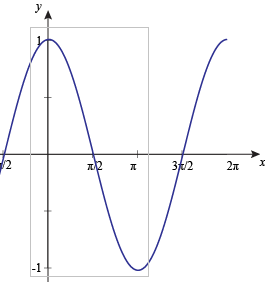Question #1f344
1 Answer
I tried this hoping I didn't confuse you even more!
Explanation:
These things you are using here are sines and cosines of angles....BUT...you can have a lot of angles!!!
The difficult thing is that if you have
In fact:
and
Sometimes to avoid to have these possibilities they reduce the interval so that you cannot go further than
Here it seems difficult because they use radians where
Ok...
To solve your equation you have to operate as in a normal equation BUT the only problem is that the unknown is an angle inside a sine or cosine.
Let us try your case:
we need to change the argument of the first sin into
You can find them on the internet or at:
http://www.onlinemathlearning.com/trig-identities.html
at the bottom right we see that:
let us substitute:
square both sides:
use the Pythagorean identity (top right) and write:
rewrite it as:
which is a second degree equation!!!!
Instead of
now the tricky part...when is it that
Let us see at the graph of

You can see that

